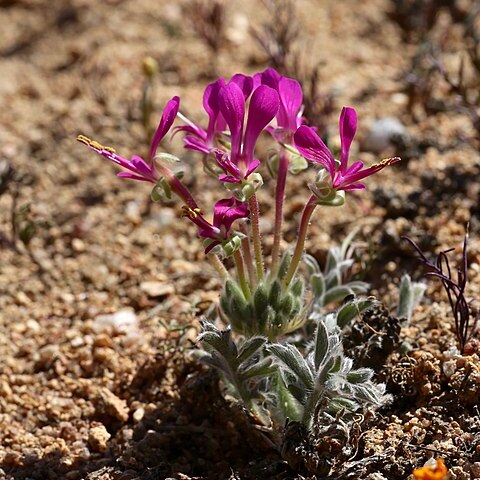Tuberous geophyte, up to 350 mm tall. Leaves barely green at flowering, pinnate to pinnately lobed, up to ± 110 x 70 mm. Flowers up to 60, in a large umbel-like cluster on a simple peduncle, very shortly pedicellate, petals 5, magenta, upper 2 markedly larger, 17-25 mm long, hypanthium 27-42 mm long.
Tuberous geophyte to 35 cm. Leaves barely green at flowering, pinnate to pinnately lobed, to ± 11 x 7 cm. Flowers to 60 on branching peduncles, ± 25 mm diam., magenta, upper petals markedly larger; hypanthium 27-42 mm long, much longer than the very short pedicel.

